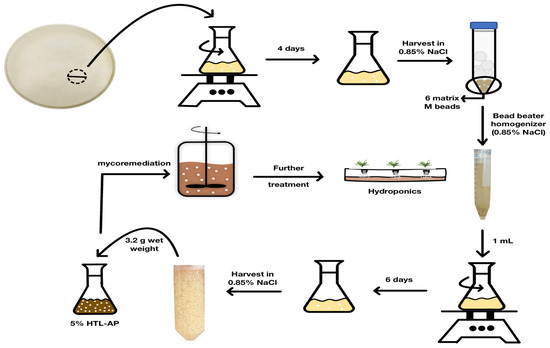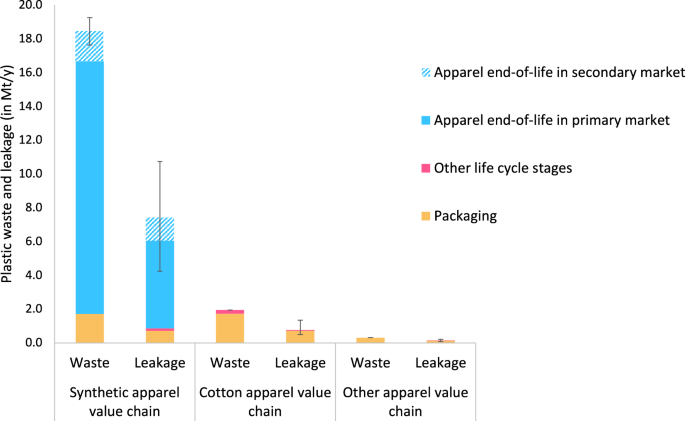2024-07-18 イリノイ大学アーバナ・シャンペーン校
<関連情報>
- https://aces.illinois.edu/news/illinois-studies-explore-converting-wastewater-fertilizer-fungal-treatment
- https://www.sciencedirect.com/science/article/pii/S240584402408023X
- https://www.mdpi.com/2077-0472/14/4/580
水熱液化水相マイコレメディエーションによる無機窒素利用率の向上 Hydrothermal liquefaction aqueous phase mycoremediation to increase inorganic nitrogen availability
Vitoria F.C. Leme, Karla Lopez, Tiago Costa, Beth Conerty, Laurie B. Leonelli, Yuanhui Zhang, Paul C. Davidson
Heliyon Available online: 27 May 2024
DOI:https://doi.org/10.1016/j.heliyon.2024.e31992

Highlights
- Fungal treatment increased HTL-AP NO3−-N and NH3/NH4+-N concentrations by 17- and 8-times after three days of treatment.
- An increase in laccase activity was observed during fungal cultivation in HTL-AP.
- The NO3−-N concentration peaked after three days of fungal treatment.
- The addition of nitrifying bacteria improved the HTL-AP fungal treatment by doubling NO3−-N concentration.
Abstract
Hydrothermal liquefaction aqueous phase (HTL-AP) is a waste product from a thermochemical process where wet biomass is converted into biocrude oil. This nutrient-rich wastewater may be repurposed to benefit society by assisting crop growth after adequate treatment to increase inorganic nitrogen, especially NO3−. This study aims to increase HTL-AP inorganic nitrogen, specifically NH3/NH4+ and NO3−, through fungal remediation for further use in hydroponic systems. Trametes versicolor, a white-rot fungus known for degrading a range of organic pollutants, was used to treat a diluted (5 %) HTL-AP for 9 days. No fungal growth was observed, but T. versicolor activity was suspected by laccase activity throughout cultivation time. NO3−-N and NH3/NH4+-N increased by 17 and 8 times after three days of fungal treatment, which was chosen as the appropriate time for HTL-AP fungal treatment as it resulted in the highest concentration of NO3−-N. The addition of nitrifying bacteria to the fungal treatment resulted in a twofold increase in NO3−-N concentration compared to the fungal treatment alone, indicating an enhancement in treatment efficacy. COD decreased by 51.33 % after 24 h, which may be related to the fungus’ capacity to reduce the concentration of organics in the wastewater; nonetheless, COD increased in the following days, which may be related to the release of fungal byproducts. T. versicolor shows promise as a potential candidate for increasing inorganic nitrogen in HTL-AP. However, future studies should primarily address HTL-AP toxicity, reducing NH3/NH4+-N while increasing NO3−-N, and hydroponics crop production after fungal treatment.
真菌および硝化細菌処理による廃水の栄養塩回収 Wastewater Nutrient Recovery via Fungal and Nitrifying Bacteria Treatment
Karla Lopez,Vitoria F. C. Leme,Marcin Warzecha and Paul C. Davidson
Agriculture Published: 6 April 2024
DOI:https://doi.org/10.3390/agriculture14040580

Abstract
In efforts to reduce the consumption of fossil fuels and promote recycling biowaste, there is an interest in the production of post-hydrothermal liquefaction wastewater (HTL-AP) from the hydrothermal liquefaction (HTL) process that converts wet biomass into biocrude oil. This study explores ways of transforming potentially toxic HTL-AP into a fertilizer source for hydroponic cropping systems. This study specifically investigates the integration of the white-rot fungus Trametes versicolor with nitrifying bacteria (Nitrosomonas and Nitrobacter) to convert the organic nitrogen compounds into inorganic nitrogen while also producing the enzyme laccase, which has been shown to remove toxic compounds. This study aims to increase the concentration of nitrate-N to valorize wastewater as a suitable fertilizer by measuring several parameters, including laccase activity, pH, nitrate-N, and ammonia/ammonium-N concentrations, and analyzes interactions to optimize the conversion process. The data support the claim that the simultaneous inoculation of T. versicolor and nitrifying bacteria significantly increases nitrate-N concentrations in HTL-AP, as it increased by 17 times, or an increase of 32.69 mg/L. In addition, HTL-AP treated with T. versicolor and nitrifying bacteria reduced the treatment time by 120 h, highlighting a reduction in personnel time and energy consumption. Therefore, this research accentuates sustainability through fungal and bacterial treatments to develop eco-friendly hydroponic fertilizers. Future research should explore the potential of utilizing the combination of T. versicolor and nitrifying bacteria for the treatment of other industrial wastewaters.



